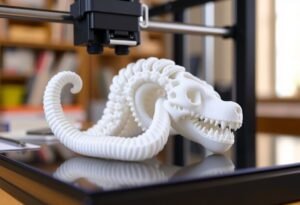Artificial Intelligence is revolutionizing various sectors, and in the world of autonomous vehicles, it plays a crucial role in enhancing safety features. With advancements in technology, the integration of AI ensures that self-driving cars navigate with precision while minimizing risks on the road. This article delves into the innovative ways AI is improving the safety of autonomous vehicles.
AI: The Backbone of Autonomous Vehicle Technology
Artificial Intelligence serves as the backbone of autonomous vehicle technology by enabling real-time data processing and decision-making. Using a range of sensors, including LiDAR, cameras, and radar, these vehicles gather and analyze vast amounts of information from their surroundings. The AI systems utilize this data to understand the environment, predict potential hazards, and make informed driving choices. This innovation drastically reduces the likelihood of accidents, providing a safer driving experience.
Enhanced Perception Through Machine Learning
Machine learning algorithms significantly enhance the perception capabilities of autonomous vehicles. By learning from millions of miles driven in various conditions, these vehicles can detect obstacles, lane boundaries, and traffic signals more accurately than traditional systems. As AI continues to learn and adapt, its ability to recognize complex scenarios, such as pedestrians crossing unexpectedly or cyclists weaving through traffic, improves significantly. This constant evolution is essential for achieving high levels of safety in self-driving architecture.
Predictive Analytics for Accident Prevention
One of the groundbreaking innovations brought by AI is predictive analytics. By analyzing patterns in traffic data, weather forecasts, and accident reports, AI can anticipate potential dangers and alter driving routes accordingly. This proactive approach not only enhances safety but also promotes efficient traffic management. The integration of predictive analytics in autonomous vehicle systems enables real-time responses to unforeseen circumstances, avoiding collisions before they happen.
Robust Testing Protocols Utilizing AI
The development of autonomous vehicles includes rigorous testing protocols that harness AI’s capabilities. Companies are employing simulation software powered by AI to test vehicle responses to millions of scenarios without the need for physical road tests. This approach not only accelerates the development process but also ensures that vehicles are equipped to handle an extensive range of situations safely. By simulating potential hazards, manufacturers enhance the reliability of their autonomous systems.
AI-Driven Vehicle-to-Everything Communication
Communication between vehicles and their environments is facilitated through AI-driven Vehicle-to-Everything (V2X) technology. This innovation allows autonomous vehicles to communicate with other vehicles, traffic signals, and even pedestrians, enhancing overall situational awareness. With instant data exchange, vehicles can make quicker decisions that prioritize safety. This level of connectivity and communication is crucial for ensuring that self-driving cars operate safely within busy urban landscapes.
Continuous Learning and System Updates
Another critical aspect of AI in enhancing safety is its ability to continually learn and update itself. As autonomous vehicles collect data from their journeys, they feed this information back into their systems to improve future performance. Regular over-the-air software updates ensure that these vehicles remain equipped with the latest features and safety protocols. This continuous improvement model is essential for maintaining high safety standards in an ever-evolving technological landscape.
This article does not constitute professional advice and should not be relied upon as such.





















